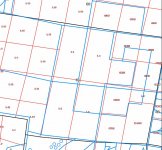ratled
Hero Member
- Feb 18, 2014
- 950
- 2,396
- Primary Interest:
- All Treasure Hunting
After seeing Bonaro's thread on staking (http://www.treasurenet.com/forums/gold-prospecting/479456-claim-staking-question.html) and some of the talk on plotting I thought I would pass on the software I use for plotting claims since it works with township & range. I use Earth Point http://www.earthpoint.us/Townships.aspx
What's nice is you can use the trial version now and again if you only do a few. It's good for plotting your claim, the neighbors property and where other claims are. In Goggle Earth you just zoom in on your claim or the area you are looking at and in a few minutes it will lay a grid over the area.
I hope this helps some
ratled
What's nice is you can use the trial version now and again if you only do a few. It's good for plotting your claim, the neighbors property and where other claims are. In Goggle Earth you just zoom in on your claim or the area you are looking at and in a few minutes it will lay a grid over the area.
I hope this helps some
ratled
Last edited:
Upvote
0











